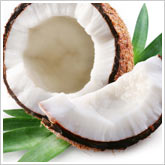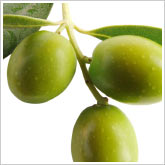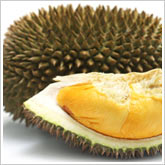Fat . . . fruit. Fat . . . fruit. Let’s say that one more time: fat . . . fruit. Hardly rolls off the tongue, does it? Most fruits and vegetables have very little fat. But there are exceptions; some of the best sources of healthy fats are fruits. Working them into your diet can provide your body with healthy fat that actually lowers your bad cholesterol while raising the good cholesterol to help protect you from heart disease. Not only that, these healthy, fatty fruits provide an array of antioxidants, vitamins, and minerals, something a slab of bacon just can’t do.
(By Andrew Rice – Original article is located here.)
But not all fruit and vegetable fats are created equal, so let’s take a look at some fatty produce and how to incorporate it into your healthy diet.

 The avocado. It’s hard to believe, really, that something so rich and buttery-tasting is a fruit. To me, an avocado is one of nature’s perfect foods, straight from the tree to you. It’s simple, packs a lot of energy, and satisfies your hunger.
The avocado. It’s hard to believe, really, that something so rich and buttery-tasting is a fruit. To me, an avocado is one of nature’s perfect foods, straight from the tree to you. It’s simple, packs a lot of energy, and satisfies your hunger.
Ounce for ounce, an avocado has as many total grams of fat as a Big Mac®, something that led to its being vilified during the “fat-free” diet crazes of the past. Seventy-five percent of the calories in an avocado come from fat, whereas most fruits derive their calories from sugars. But ever since nutritionists sorted out the difference between bad and good monounsaturated fats, the avocado has been voted back onto the island.
Half a California avocado has an excellent overall nutrient profile: 114 calories, 2 grams of protein, 4.5 grams of fiber, and 11 grams of fat, most of which (8 grams) is monounsaturated fat.
The monounsaturated fat found in avocados is mostly oleic acid, which, according to a 1996 study by researchers at the Instituto Mexicano del Seguro Social in Mexico, may help lower cholesterol. This study found that after 7 days of a diet rich in avocados, subjects saw significant decreases in both total and LDL (“bad”) cholesterol, as well as an 11 percent increase in HDL (“good”) cholesterol. In other words, it showed that avocados raised good cholesterol levels while lowering the bad, a one-two punch against heart disease.
But good fats are not the only attractive side of this leathery-skinned green fruit. Avocados also have 60 percent more potassium than bananas, making them a great post-workout recovery food. They’re also rich in vitamin E and other antioxidants.
You’ll also find a large amount of omega-3s and omega-6s in avocados, excellent news for vegetarians and vegans who want to incorporate these beneficial fatty acids into their diet without consuming fish oil, poultry, or eggs.
Really, the only way you can go wrong eating avocados is if you eat so many of them that the excess calories make you overweight. But as part of a healthy diet and lifestyle, bring on the avocados.
 Cuckoo for coconut. You can argue that a coconut isn’t a fruit. People will also argue that a tomato is a vegetable and that a peanut, which is really a legume, is a nut. Whatever. We eat them all. While the avocado is unabashedly awesome for your health, the health benefits of the coconut’s flesh, and particularly its milk, are less clear-cut.
Cuckoo for coconut. You can argue that a coconut isn’t a fruit. People will also argue that a tomato is a vegetable and that a peanut, which is really a legume, is a nut. Whatever. We eat them all. While the avocado is unabashedly awesome for your health, the health benefits of the coconut’s flesh, and particularly its milk, are less clear-cut.
This is because unlike the avocado, with its wonderfully healthy monounsaturated fats, which provide it with its silky flavor, the coconut is rich in saturated fats. However, different kinds of saturated fats have different chemical compositions, depending on the number of carbon atoms they contain. The saturated fat in coconut oil consists mainly of lauric acid and myristic acid, whereas red meat like beef contains mostly palmitic acid. Lauric acid has been shown to increase good cholesterol levels, and, along with myristic acid, may have antimicrobial/anti-acne properties. Consumption of palmitic acid, on the other hand, has been shown to increase risk of heart disease in humans.
According to researchers, consuming coconut flesh and/or coconut oil can raise your cholesterol levels, but since they raise your good cholesterol more than your bad cholesterol, things would seem to balance out. But here’s where the research gets complicated: When studying the nutritional properties of one food, it’s important to take into account the other foods it’s consumed with, especially in terms of regional dietary habits.
The Asia Pacific Health and Nutrition Centre at Monash University in Melbourne, Australia, studies the eating habits of people in Indonesia and other Pacific Island regions who consume diets rich in coconut. Coconut has long been a staple in this region, where there has traditionally been a very low incidence of heart disease. But because the percentage of coconut in the regional diet has been declining for decades as imported foods like red meat have become more available, the incidence of coronary heart disease among these people has increased.
The reason appears to be that Pacific Islanders have traditionally consumed coconut along with large quantities of fresh fruit, vegetables, and fish. (As a side note, the night before I finished this article, I had a traditional Thai dish that combined coconut, fish, and vegetables: squid curry.) So if coconut, coconut milk, and/or coconut oil encourage you choose to cook a delicious meal of fresh vegetables and seafood, it’ll probably do you good. If you just like the taste of fresh coconut meat, it’s probably not doing you any harm. But frying your donuts in coconut oil isn’t going to turn them into anything resembling a healthy treat.
 Olives. The only fruit that can top the avocado for beneficial fats is the humble olive. Health researchers have been lauding the benefits of the olive and its oil for decades, and the olive rightfully holds a place of honor in the healthful Mediterranean diet.
Olives. The only fruit that can top the avocado for beneficial fats is the humble olive. Health researchers have been lauding the benefits of the olive and its oil for decades, and the olive rightfully holds a place of honor in the healthful Mediterranean diet.
The main type of fat found in all kinds of olives and olive oils is monounsaturated fatty acid, which helps to lower your total cholesterol and bad cholesterol levels. According to Mayo Clinic researchers, monounsaturated fatty acids may also help normalize blood clotting, as well as benefitting insulin levels and helping to control blood sugar.
In my own experience, cured olives are also highly portable, keep well without refrigeration, and satisfy the same type of hunger that might otherwise have me reaching for a piece of cheese or salami, neither of which is going to lower my cholesterol. My primary salad dressing of choice is simply extra virgin olive oil with a dash of balsamic vinegar. Both good things. Trading in your overly processed bottled dressing for some self-mixed olive oil and vinegar is a great way to cut your intake of sugar and unhealthy fats with no loss of taste or enjoyment.
 The weirdest fruit of all? The durian. To be honest, I’m really only writing about the durian for its novelty factor. Unless you grew up in Southeast Asia, it might be hard to feel any love for this giant prickly fruit that, when it’s ready to eat, smells like an overripe armpit. (Yes, you read that right: It smells like B.O.)
The weirdest fruit of all? The durian. To be honest, I’m really only writing about the durian for its novelty factor. Unless you grew up in Southeast Asia, it might be hard to feel any love for this giant prickly fruit that, when it’s ready to eat, smells like an overripe armpit. (Yes, you read that right: It smells like B.O.)
But the durian doesn’t taste like it smells, and it’s a great source of beneficial fats. One 100-gram serving (a little more than a third of a cup of cubed pieces) contains 147 calories and 5 grams (or 8 percent of your daily requirement) of beneficial monounsaturated fat. And unlike olives, the durian is also a source of the amino acid tryptophan, which is known to increase seratonin levels in your brain, which can lift your mood. (Interestingly enough, avocados have fairly high tryptophan levels too.)
Finally, like many other tropical fruits, the durian is a good overall source of fiber and vitamins. So next time you’re in a Thai or Indonesian fruit market and get a whiff of something that smells like it needs to take a bath, consider giving the durian a chance.
As soon as I learn a recipe for a delicious durian-avocado-coconut-olive shake, you’ll be the first to hear. Until then, I’ll be putting my money where my mouth is and eating a lot of guacamole and olives to help my cholesterol. And I’ll leave the durians for you.
Related Articles
“5 Ways to Make Over Your Veggies”
Questions about your workout program, diet, the latest newsletter, or anything wellness related? Chat with Denis Faye, Beachbody fitness advisor, in the Beachbody Chat Room on Monday, July 11th, at 3:00 PM ET, 12:00 PM PT.
If you’d like to ask a question or comment on this newsletter article, click here to add a comment in the newsletter review section or you can email us at mailbag@beachbody.com.
Check out our Fitness Advisor’s responses to your comments in Steve Edwards’ Mailbag on the Message Boards. If you’d like to receive Steve Edwards’ Mailbag by email, click here to subscribe to Steve’s Health and Fitness Newsletter. And if you’d like to know more about Steve’s views on fitness, nutrition, and outdoor sports, read his blog, The Straight Dope, recently named one of the Top 50 blogs covering the sports industry by the Masters in Sports Administration.
